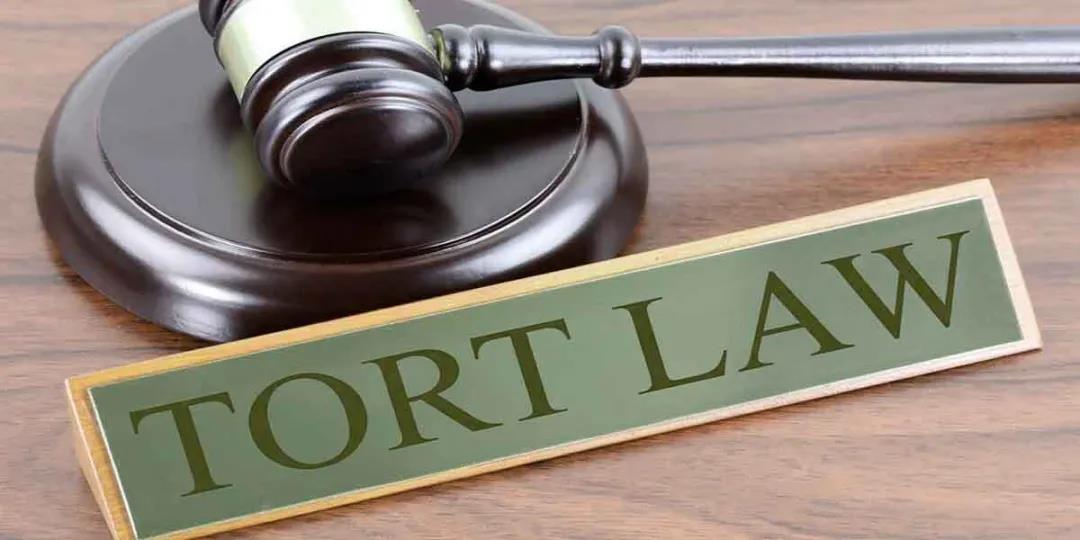
翻译工作坊|侵权法中的这些术语你都清楚了吗?
侵权法(torts)是与人们日常生活联系最为密切的法律。英美侵权法在经过几百年的发展之后,已经形成了非常完善的法律体系。本期将分享侵权法中几个常见术语。

1
# 过失侵权 #
Negligence
定义:
过失侵权行为在英美侵权法中占有非常重要的地位。过失(疏忽)侵权(negligence)是侵权法的核心领域,也是主要的侵权形式。其主要指会给他人造成不合理损害危险的行为。通常认为,一项过失之诉的诉因(cause of action)包括四个构成要件:义务的存在、违反义务的行为、因果关系和损害。最后一个要素表明,在无实际损害的情况下,原告不能请求以象征性损害赔偿来维护其法律名义上的免受他人疏忽导致的危险的权利;过失侵权之诉因的存在必须以某种实际损害的发生为前提。
(https://www.chinacourt.org/article/detail/2007/01/id/231516.shtml)
证明过失侵权行为发生的要素:
There are certain elements that are required to prove that a defendant acted negligently. There is a specific code of conduct that all people are expected to follow and there is a duty of the public to act in a certain way, which reduces the risk of harm to others.
Negligence can only be claimed by an injured plaintiff, whose interests have actually been interfered with. This portrays that a plaintiff must prove his injuries, and prove that he was caused by the defendant. This proximate cause is the link between the defendant's actions and the plaintiff's injuries.
There is a statute of limitations in negligence cases. And several rules, such as discovery and continuing negligence, may excuse a plaintiff from the statute of limitations.
(https://tort.laws.com/tort-law)
过失侵权行为的抗辩:
a. Contributory Negligence
A doctrine of common law that if a person was injured in part due to his/her own negligence (his/her negligence "contributed" to the accident), the injured party would not be entitled to collect any damages (money) from another party who supposedly caused the accident.
(https://dictionary.law.com )
共同过失。指原告本身的疏忽,并且在其诉称的由于被告过错而导致的损害中,原告的过失亦构成致损原因的一部或全部。在英国普通法上,只要有证据证明原告本身由于某种过失直接并且严重地造成了其所受的损害,被告的责任即可全部免除,故其成为损害赔偿之诉中被告的完全抗辩(complete defence)。
实例1:
If Joe Tosspot was driving drunk and speeding and Angela Comfort was going 25 m.p.h. but six inches over the center-line, most likely Angela would be precluded from any recovery (receiving any money for injuries or damages) from a car crash.
乔•托斯波特酒后驾车并且超速,而安吉拉•康福特(原告)的车速仅为每小时25英里,但她压6英寸的道路中心线,那么安吉拉很可能无法从车祸中得到任何救济。因为原告安吉本身的过失也是致使事故发生的一部分原因。
b. Comparative Negligence
A rule of law applied in accident cases to determine responsibility and damages based on the negligence of every party directly involved in the accident. Most cases are not as simple, and the formulas to figure out, attribute and compare negligence often make assessment of damages problematic, difficult, and possibly totally subjective.
Not all states use comparative negligence (California is a fairly recent convert), and some states still use contributory negligence which denies recovery to any party whose negligence has added to the cause of the accident in any way. Contributory negligence is often so unfair that juries tend to ignore it.
(https://dictionary.law.com)
比较过失。指在损害赔偿之诉中,将原告的过失与被告的过失进行比较,以减少被告应承担的赔偿份额。一般而言,被告的过错程度越高,原告为获得赔偿所需的注意程度越低,但无论原告的过错如何,都不能完全免除被告的责任。
实例2:
Eddie Leadfoot, the driver of one automobile, is speeding and Rudy Airhead, the driver of an oncoming car, has failed to signal and starts to turn left, incorrectly judging Leadfoot's speed. A crash ensues in which Airhead is hurt. Airhead's damage recovery will be reduced by the percentage his failure to judge Leadfoot's speed contributed to or caused the accident.
司机埃迪正驾车超速行驶,而迎面而来的另一汽车司机鲁迪没有打信号,开始左转,对埃迪的速度判断失误,随后发生碰撞,鲁迪受伤。鲁迪的损失赔偿将依据他未能判断埃迪的速度而导致的事故的百分比而减少。
(https://dictionary.law.com)
Notice: Not all states use comparative negligence (California is a fairly recent convert), and some states still use contributory negligence which denies recovery to any party whose negligence has added to the cause of the accident in any way. Contributory negligence is often so unfair that juries tend to ignore it.
在许多州,共同过失(contributory negligence)已经被比较过失(comparative negligence)抗辩原则所取代。因为共同过失对于受害者来说往往是不公平的,即受害者(被告)有任何过失行为,将无法从被告那里获得救济。
2
# 近因 #
Proximate Cause
定义:
英美法系在认定侵权行为法上因果关系时采用二分法,将因果关系分成两种类型,其一为事实上的原因(Cause in Fact),其二为法律上的原因(Legal Cause),其中法律上的原因一般用“近因”(Proximate Cause)来表示。
该概念来源于著名的法谚"Cause Proximate non Remote Specular", 即“只看近因,不看远因”。Proximate 意为“(时间、场所或、次序上)最接近的”。“近因”与“远因”相对,然而这里的“近”和“远”怎么界定至今尚无定论。《布莱克法学词典》认为:“这里所谓的最近,不必是时间或空间上的最近,而是一种因果关系的最近。损害的近因是主因或动因或有效原因。”据此,《布莱克法律辞典》对“proximate cause”做了如下界定:“法律上足以产生责任的原因,或者被认为在法律上导致一个结果并进而可以对行为人施加责任的作为或不作为”。
某一因素成为近因的要件:
The name given to the direct cause of an accident, or incident leading to
injury, is referred to as "proximate". The term "proximate cause" has long been known to mean near or in the vicinity of, not actual. This gives a misconception to the name as if the cause was nearly opposed to the actual one.
Other issues arise deeper within proximate cause, and that is with the scope of liability and its extent. Controversy exists as to where liability should be extended to a defendant, based on his responsibility or duty.
(https://tort.laws.com/proximate-cause)
近因,即事故的直接原因,或导致伤害的事件。众所周知,“近因”一词的意思是靠近或接近,而不是实际或确切。这让人对这个术语产生了误解,好像这个近因与实际原因几乎是对立的。
在近因中还出现了其他更深层次的问题,即责任的范围和程度。依据被告的责任或义务,应将责任扩大到什么程度,业界存在很多争议。
近因原则是英美法系侵权法中用以认定因果关系的基本原则,指在侵权案件审判中以近因作为因果关系认定的标准,只有“近因”承担侵权责任,“远因”不参与责任的分担。被告的行为可能造成许多伤害结果,但被告不一定对所有这些伤害都负责任,而只对由他的行为直接造成的、可预见的伤害结果负责。也就是说,要使被告负侵权责任,原告不仅要证明被告的行为是造成伤害的事实上的原因,还要证明被告的行为是造成伤害的最近原因或法律原因(即近因)。
以近因作为因果关系认定的标准首见于美国法院1866年在著名的纽约火灾案的判决。该案建立了这样一项法律原则:“如果被告因过失引起的火灾造成大片建筑焚毁,该被告仅对所引燃的首幢建筑的损失承担赔偿责任”。
近因原则的核心是被告的过失与伤害之间存在着直接、自然的因果。在司法实践中,某一因素成为近因必须同时满足两个要件:第一,该因素实质上造成了损害结果的发生;第二,该因素自然地连续地发生作用,期间没有能够造成因果关系中断的其他因素的介入。
实例:
比如被告过失驾车撞了另一辆车,被撞的车冲出公路,撞倒了路边的电线杆,使该地区全部断电。显然,被告的过失是后面一系列伤害事实上的原因,但根据近因规则,被告则可能只对与他的过失最直接、最有关联的伤害结果(如车祸)负责;如果让被告对以后的一系列伤害(电线杆倒塌、地区断电、因断电使老人摔跤、工厂停工等)都要负责的话,那他的责任将永无休止,这对被告是不公平的。“近因”规则的使用,实际上是对被告无限责任的一种限制。
(https://tort.laws.com/tort-law)
3
# 侵害 #
Trespass
定义:
Trespass,即英格兰古法中的所谓侵害之诉,原为英格兰中世纪的一种诉讼形式,指因自己的身体、财产、权利、名誉或人际关系被侵害而索赔的诉讼。巡回初审(nisi prius)制度建立起来之后,这种诉讼形式在14世纪才普遍起来。后又发展出间接侵害之诉(trespass on the case或简称为case)的诉讼形式。早期违约之诉是根据侵害之诉来得到救济的。到17世纪末为止,大量的案件受到了从侵害之诉所发展出来的各种诉讼形式的影响。
在现代法中,trespass有三类:侵害他人财物(trespass to goods或trespass de bonis asportatis)、侵犯他人人身(trespass to the person)以及侵入他人土地(trespass to and或trespass quare clausum fregit)。在苏格兰,这一词只在进占他人土地的意义上运用。
分类:
Black's Law Dictionary defines trespassing as, "An unlawful act committed against the person or property of another; especially, wrongful entry on another's real property." In addition to this definition, the dictionary defined trespass in more specific subsections due to the broadness of the term. These classifications are:
Continuing Trespass: A trespass in the nature of a permanent invasion on another's rights, such as a sign that overhangs another's property.
Criminal Trespass: 1) A trespass on property that is clearly marked against trespass by signs or fences. 2) A trespass in which the trespasser remains on the property after being ordered off by a person authorized to do so.
Innocent Trespass: A trespass committed either unintentionally or in good faith.
Joint Trespass: A trespass that two or more persons have united in committing, or that some have actually committed while others commanded, encouraged, or directed it.
布莱克法律词典将非法侵入定义为“对他人的人身或财产实施的非法行为;尤其是对他人不动产的非法进入。”除此定义之外,由于该术语使用较为广泛,字典在更具体的小节中,又分别有如下定义:
持续侵入:对他人权利的具有永久侵犯性质的侵入,如将标识悬挂在他人财产上方。
非法侵入罪:1)非法侵入通过标识或围栏明确禁止侵入的财产。2)侵入者在被权利人命令离开后仍留在财产上的侵入行为。
无罪侵入:无意或善意的侵入。
共同侵入:由两人或两人以上共同实施的侵入行为,或在他人命令、鼓励或指示下,一些人实际实施的侵入行为。
来源:布莱克词典
常见抗辩:
Trespass can be presented in court as either a tort or a crime. To civil trespass, there are four main defenses: easement, estoppel, necessity and consent.
1) Easement is the legal right to use the property of another when it is not in your possession. The court broadened this term in a New York appellate court decision and declared that an easement granted in general terms must be construed to include any reasonable use which is lawful.
2) Estoppel is when a person who has a duty to speak or act, intentionally or negligently through their action or inaction, made another believe in the existence of a fact that did not exist, and another acted by relying on that act or omission.
3) A defendant can invoke necessity if in an emergency they trespass in order to protect the interests of others or themselves. While the defendant won't be liable for trespassing, they can still be held accountable for any harm done to the property as caused by the trespass.
4) Trespassing is allowed if the entry to the property is with the consent or license of the person who has a legal ownership of the property or land. This defense has two elements that must be proven on the side of the plaintiff though: a. there was a voluntary acceptance of an intentionally tortuous act, b. with full knowledge or understanding of the consequence.
非法侵入可以作为侵权或犯罪在法庭上提出。对民事侵入行为的抗辩主要有地役权抗辩、禁止反言抗辩、必要性抗辩和许可抗辩。
1)地役权是一项在不占有的情况下使用他人财产的合法权利。在纽约上诉法院的一项判决中,法院扩大了这一术语的范围,并宣布,一般条款中的地役权必须解释为包括任何合法的合理使用。
2)禁止反言是指一个人因自己的作为或不作为,故意或过失地使另一个人相信不存在的事实存在,并因此作为或不作为而采取行动时所应承担的责任。
3) 如果被告在紧急情况下为了保护他人或自己的利益而侵入,他们可以援引必要性抗辩。虽然被告对非法侵入不承担责任,但他们可能仍需对非法侵入造成的财产损害承担责任。
4)如果对财产或土地拥有合法所有权的人许可或授权进入该财产,则允许非法侵入。这一抗辩有两个必须由原告方证明的要素:自愿接受故意侵权行为;充分了解或理解后果。
来源:Trespass-Criminal Defense Wiki (ibj.org)
Conclusion
学习法律术语不仅要看其释义,更要不断挖掘其深层含义,及其运作逻辑,要做到“知其然”并“知其所以然”。了解侵权法术语及内涵,并加以熟练运用,有利于在诉讼中维护各方利益。
# End #
材料:侯 鑫 聂梦瑶
编辑:胡 鹏
审核:王 芳 薛羽晨
排版:周旻颉
校对:王茸茸
图片来源于网络





